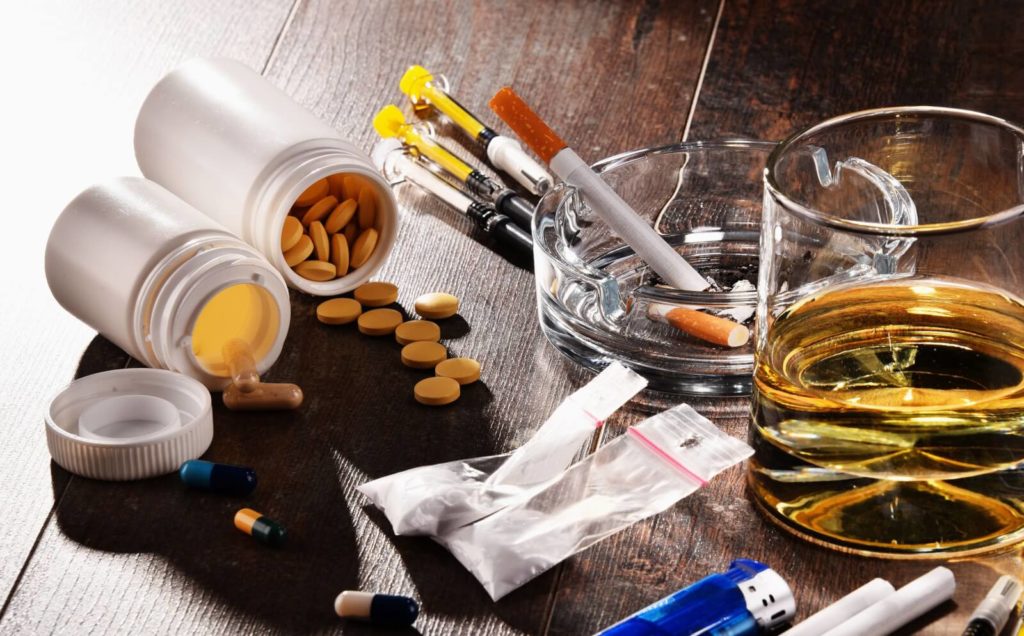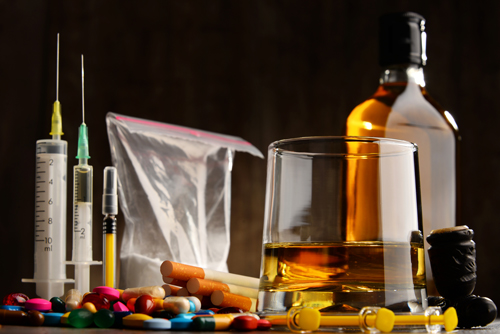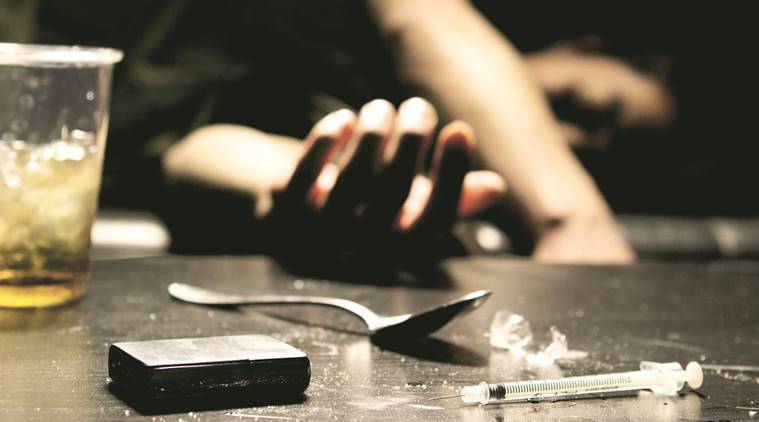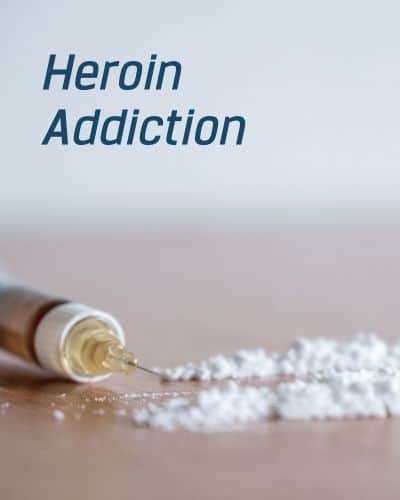Heroin Addict Behavior
There are a variety of risk factors for addiction. Some addicts are genetically predisposed to substance use disorder. They could have been raised in a family with a deeply rooted history of addiction. For others, addiction may have been the product of a traumatic event or period in their life.
In many cases, people take on certain personality traits that increase their likelihood of developing a substance use disorder. Addiction is a complex medical condition that makes it hard to generalize the traits and actions of heroin addicts. However, some commonalities can help both professionals and concerned friends or family members identify whether an individual could be struggling with a substance use disorder.
If you or someone that you care for is struggling with a heroin addiction, know that recovery is possible. Many recovery centers and programs have been designed to treat and aid in highly effective ways. No matter what age or background clients have, they can be sure that they will be well cared for while their needs are met and their goals prioritized.
Skip To:
Learn More:

Get Your Life Back
Find Hope & Recovery. Get Safe Comfortable Detox, Addiction Rehab & Dual Diagnosis High-Quality Care.
Hotline(844) 597-1011These are the personality traits that are commonly linked to heroin addicts:
1. Slow or Sudden Changes in Physical Health and Appearance
Histamine, a chemical created in the body, will be released quite often when heroin is present. Once it is released, it may cause the user to have a runny nose and an overwhelming sense of itchiness. As a result of this, someone suffering from heroin addiction may often have a runny nose and an inability to fight off common colds and seasonal allergies. Heroin can hurt the immune system and weaken its ability to combat infections.
In addition to this, heroin addicts may often have dry mouth, abscesses, and other skin infections. Dry mouth, also known as cottonmouth, is a common side effect of heroin. Most heroin users inject the drug in large quantities via a syringe. This is what often leads to infections such as abscesses that appear at the site of injection. Injecting multiple times a day will damage the skin and leave scars behind.

Most people will experience the side effects of heroin for up to five hours after ingestion. The most common effects are slurred speech, trouble breathing, and disorientation. Cottonmouth and dilated pupils are also common amongst those who have recently ingested the drug.
2. Frequent Impulsivity
Impulsivity is defined as a behavior that involves someone tending to act with little regard for the consequences of their actions. For example, an impulse purchase might be made off the cuff without considering how it could impact the buyer’s budget or lifestyle.
Impulsivity is a common personality trait amongst those who struggle with the escalation of drug use. It is also present among those who often relapse after long or short periods of sobriety. Impulsivity is commonly linked with addiction because it feeds the desire for instant gratification. Impulsive people yearn for the desire to feel gratification and pleasure at the moment, rather than setting goals and making strategic plans to achieve success and happiness.
Impulsive behavior can be exhibited in many ways. Some people may eat an excessive amount of food in one sitting without considering how their body will respond to the high levels of calories, fat, sugars, etc. Some may drive recklessly or engage in other risky behavior without considering how it could harm them and others. Some people engage in shoplifting, extreme sports, property damage, violence, and many other impulsive behaviors with little to no regard for the consequences.
3. Constant Fatigue
Opium, a derivative of the poppy flower used to make heroin, has properties that encourage numbness and feelings of fatigue and drowsiness. This can easily lead most heroin users to a lifestyle full of frequent napping and extensive sleeping.
Although that could be a sound explanation for constant fatigue in a heroin addict, other issues can bring the same effect. Many people who struggle with substance use disorder eventually fall into depression and begin to lose interest in the things that once brought them immense joy and happiness. They may eventually find nothing to look forward to each day other than the high or satisfaction that they will get from their substance of choice. Once things reach this point, they may sleep more than usual or have a lower energy level than most.
Keep in mind that heroin may not impact every user in the same manner. Some of those with pre-existing health conditions may have side effects that are different from those of the average person with substance use disorder. Therefore, sleepiness and chronic fatigue may or may not be a product of their heroin addiction. Although it is common among heroin users, many other health issues can lead to that as well, such as depression and sleep apnea.
4. Patterns of Dishonesty and Manipulation
The core of addiction is often the struggle to go without whatever it is that is making the person addicted. Though it may seem like an obvious observation, understanding the basic foundations of addiction can help you understand why they lead to certain changes in behavior and personality. Heroin and other addictive substances can cause intense cravings in the user that override their ability to control their impulses. Those struggling with the ability to control cravings will do almost anything to obtain the substance they are addicted to, even if it means harming others.
For example, an addict could resort to theft and manipulation of family members and friends if it meant that they could get access to heroin that way. This behavior is often the biggest reason why those who struggle with substance use disorder eventually find themselves to be on the outs with their loved ones. When the addiction is out of control, it can hurt the addict’s moral compass and reasoning.
5. Questionable Acquaintances
Peer pressure can be a struggle for people of all ages, not just those who are younger and in school. Some of those struggling with substance use disorder may already know people who have access to toxic and addictive substances, while others could begin to befriend questionable characters solely because they offer access to heroin.
Once a heroin addiction becomes obvious enough that family members and friends notice it, addicts may choose to distance themselves and go where they feel they will be accepted and comfortable. This could be in the company of other addicts or distributors of addictive substances. They will often feel the need to escape those feelings of guilt and judgment, which encourage them to surround themselves with like-minded individuals, even if that will only drive them further into their addiction.
Even if family members and friends are only showing concern and care for their well-being, it can be difficult for heroin addicts to face the reality of the issue and make a change. Stubbornness is incredibly common amongst those who are addicted. Like most people in the world, they find the comfort of instant gratification and pleasure to be more rewarding than the pain and discomfort that could come with having to make a change.
6. Chronic Financial Issues
Impulsivity and the struggle of dealing with cravings can quickly lead an addict to financial woes. Illegal drugs can be expensive, and the impulsive nature of most addicts leads them to do whatever they can to feed the addiction, even if they don’t have the financial means for it.
Heroin addicts typically find themselves pawning prized possessions, gambling, or using money intended for bills to further their addictions. Some soon find themselves in debt and need to part with their most important possessions. If you are a family member or friend of someone with substance use disorder, you may also find that they are asking to borrow money more often or can’t afford simple things that they used to be able to buy.
As addiction progresses, to the user, nothing seems more important than the substance they are addicted to. Their need and desire for the substance will override almost anything else that they possess, regardless of how valuable the items may be. Be wary of this and pay close attention to how they behave when they can’t find a route to their next opportunity to use the substance. This is an easy way to determine that they need professional help.
7. Trouble With Stress Management
Stress is common, regardless of whether one has a substance use disorder. Some people, however, have higher levels of stress than the average person. For example, those who are involved in careers that impact their safety or character daily will be more stressed than most. A movie star could often feel suffocated by trying to maintain a particular image to be favored in the public eye. A firefighter, policeman, or soldier could often find themselves struggling with the thought of whether or not their next workday could be their last.
The inability to cope with stress is an understandable and highly relatable struggle that impacts billions of people each day. When it becomes too overwhelming to bear, the individual could often feel the need to seek relief from a substance. In most cases, that substance can provide a temporary feeling of relief and satisfaction, which is what leads to the addiction. Once the individual finds that they can escape from the haunting levels of stress and anxiety via the substance, they will begin to rely on it, even if they can only feel that relief for a few moments.
If you know that your loved one, friend, or acquaintance is dealing with high levels of distress, reach out and pay attention to their behavior and actions, as this can help you lead them to a better method of stress relief. Some people dealing with high levels of stress begin to withdraw from their family and friends. They could also engage in behaviors such as binge-watching TV, binge eating, oversleeping, and overworking. Some could also begin to change in a way that is harmful to others in their vicinity, such as lashing out and engaging in physical or emotional abuse. Self-harm is another common link between highly stressed individuals and substance use disorder.
Get Help. Get Better. Get Your Life Back.
Searching for Accredited Drug and Alcohol Rehab Centers Near You?
Even if you have failed previously and relapsed, or are in the middle of a difficult crisis, we stand ready to support you. Our trusted behavioral health specialists will not give up on you. When you feel ready or just want someone to speak to about therapy alternatives to change your life call us. Even if we cannot assist you, we will lead you to wherever you can get support. There is no obligation. Call our hotline today.
(844) 597-1011What Does a Heroin Addict Look Like? Signs of a Heroin Addict
What does a heroin addict look like? Heroin enters the brain rapidly and binds to opioid receptors on cells located in many areas, especially those involved in feelings of pain and pleasure and in controlling heart rate, sleeping, and breathing.
Short-term signs:
People report feeling a “rush” (a surge of pleasure, or euphoria) when using Heroin. Nevertheless, there are other short-term symptoms of this drug, which can include:
- Dry mouth
- Warm flushing of the skin
- Heavy feeling in the arms and legs
- Nausea and vomiting
- Severe itching
- Clouded mental functioning
- Going “on the nod,” a back-and-forth state of being conscious and semiconscious.
Long-term signs:
People who consume heroin may develop the following conditions over time, be careful of these signs:
- Insomnia
- Collapsed veins for people who inject the drug
- Damaged tissue inside the nose for people who sniff or snort it
- Infection of the heart lining and valves
- Abscesses (swollen tissue filled with pus)
- Constipation and stomach cramping
- Liver and kidney disease
- Lung complications, including pneumonia
- Mental disorders such as depression and antisocial personality disorder
- Sexual dysfunction for men
- Irregular menstrual cycles for women
Heroin often contains additives, such as sugar, starch, or powdered milk, that can clog blood vessels leading to the lungs, liver, kidneys, or brain, causing permanent damage. Also, sharing drug injection equipment and having impaired judgment from drug use can increase the risk of contracting infectious diseases such as HIV and hepatitis.
First-class Facilities & Amenities
World-class High-Quality Addiction & Mental Health Rehabilitation Treatment
Rehab Centers TourRenowned Addiction Centers. Serene Private Facilities. Inpatient rehab programs vary.
Addiction Helpline(844) 597-1011Proven recovery success experience, backed by a Team w/ History of:
15+
Years of Unified Experience
100s
5-Star Reviews Across Our Centers
10K
Recovery Success Stories Across Our Network
- Low Patient to Therapist Ratio
- Onsite Medical Detox Center
- Comprehensive Dual-Diagnosis Treatment
- Complimentary Family & Alumni Programs
- Coaching, Recovery & Personal Development Events
What does a heroin addict look like? Physical Signs of Heroines Use
Weight Loss
When someone abuses heroin, they will often lose weight. That sudden weight loss can be one of the first physical signs for friends and family members to watch out for. The weight loss often affects how their face looks, so people with a heroin addiction may look tired, gaunt, or older than they are. The reason for weight loss is that heroin can make you nauseous, leading to vomiting and appetite loss.
Facial Characteristics
People abusing heroin may also have dark circles around their eyes and a pale complexion. Heroin use impacts blood pressure and heart rate, so people may also have a bit of a bluish tint to their skin.
Itching, Picking, and Sores
When you take heroin and other opioids, it can cause itchiness and people may start itching and picking at their faces, causing sores and scabs.

“Heroin Hunch” or “Heroin Lean”
Heroin also tends to make people’s coordination unbalanced and their limbs feel heavy, so it can seem at times like they’re dragging themselves as they’re walking or they’re slouching over strangely.
Heroin Track Marks
Of course, if someone is injecting heroin, they may also have marks where the needles were used, or they might wear long sleeves and pants even when the weather is hot to hide the needle marks.
Abscesses and Skin Infections
People addicted to heroin can have abscesses or infections on their skin from injecting the drug, sores on their nose or lips, and burns on their fingers from smoking it. The skin around their eyes may appear puffy, as well.
World-class, Accredited, 5-Star Reviewed, Effective Addiction & Mental Health Programs. Complete Behavioral Health Inpatient Rehab, Detox plus Co-occuring Disorders Therapy.
CALL(844) 597-1011End the Addiction Pain. End the Emotional Rollercoaster. Get Your Life Back. Start Drug, Alcohol & Dual Diagnosis Mental Health Treatment Now. Get Free No-obligation Guidance by Substance Abuse Specialists Who Understand Addiction & Mental Health Recovery & Know How to Help.
What does a heroin addict look like? Other Signs of a Heroin Addiction
The aforementioned signs are not the only indicators of heroin use. The drug has many physical effects on people depending on the volume and regularity of heroin use.
Some other signs of heroin use include:
- A persistent cough
- Dry mouth
- Pinpoint pupils
- Nosebleeds
- Flu-like symptoms
- Runny nose
- Constipation
- Loss of menstrual cycle
- Sexual problems in men
Beyond the physical changes that heroin can cause, the drug impacts a person’s behavior too. In some cases, recognizing a change in personality and behavior may be easier for friends and family members to identify than the physical signs of heroin addiction.
Behavioral changes can include:
- Seeming disoriented or uncoordinated
- Being jittery or alert and then nodding off shortly after that
- Excessive sleep
- Declining performance in school or work
- Slurred speech
- Apathy
- Hostility
- Lack of motivation
- Avoiding eye contact
- Declining hygiene
- No concern for their appearance
- Being alone
- Withdrawing from loved ones
- Wearing sunglasses more than usual
Aside from physical appearances and behavior, the presence of heroin paraphernalia is an indicator of addiction. The following are some of the items that you may find when someone close to you is using heroin:
- Syringes
- Orange caps from syringes
- Burned spoons
- Aluminum foil or gum wrappers
- Shoelaces or missing shoelaces
- Straws
- Empty pen cases
- Small plastic bags
- Bottled water and bottle caps
- Razor blades
- Empty drug capsules
- Cotton balls or q-tips
It’s important to realize that there are not always outward signs that indicate heroin addiction, but if there are any red flags, it’s important to speak with a medical professional.
Treatment Options for Heroin Use
Treatment for Heroin Addiction includes medical detox treatments and behavioral therapies. In order for a treatment to be effective, it’s important to match the best treatment approach to meet the particular needs of each individual patient. There are medicines being developed to help with the withdrawal process. The FDA approved lofexidine, a non-opioid medicine designed to reduce opioid withdrawal symptoms.
Medicines to help people stop using heroin include Buprenorphine and Methadone. They work by binding to the same opioid receptors in the brain as heroin, but more weakly, reducing cravings and withdrawal symptoms. Another treatment is Naltrexone, which blocks opioid receptors and prevents opioid drugs from having an effect. A NIDA study found that once treatment is initiated, both a Buprenorphine/Naloxone combination and an extended release Naltrexone formulation are similarly effective in addiction. Because full detoxification is necessary for treatment with naloxone, initiating treatment among active users was difficult, but once detoxification was complete, both medications had similar effectiveness.
National Institute on Drug Abuse

Behavioral therapies for Heroin Addiction include methods called Cognitive-Behavioral therapy and contingency management. Cognitive-Behavioral therapy for addiction helps modify the patient’s drug-use expectations and behaviors, and helps effectively manage triggers and stress. Contingency Management provides motivational incentives, such as vouchers or small cash rewards for positive behaviors such as staying drug-free. These Behavioral Treatment approaches are especially effective when used along with medicines.
National Institute on Drug Abuse
Heroin Addiction Treatment
Heroin addiction is a serious condition that should not be taken lightly. We Level Up rehab treatment & detox center can provide you, or someone you love, the tools to recover from heroin addiction with professional and safe treatment. Feel free to call us to speak with one of our counselors. We can inform you about this condition by giving you relevant information. Our specialists know what you are going through. Please know that each call is private and confidential.
Experience Transformative Recovery at We Level Up Treatment Centers.
See our authentic success stories. Get inspired. Get the help you deserve.
Start a New Life
Begin with a free call to an addiction & behavioral health treatment advisor. Learn more about our dual-diagnosis programs. The We Level Up Treatment Center Network delivers recovery programs that vary by each treatment facility. Call to learn more.
- Personalized Care
- Caring Accountable Staff
- World-class Amenities
- Licensed & Accredited
- Renowned w/ 100s 5-Star Reviews
We’ll Call You
Sources
[1] ‘Heroin’ – National Library of Medicine (Medlineplus.gov)
[2] ‘Heroin DrugFacts’ – The National Institute on Drug Abuse (drugabuse.gov)
[3] ‘[Heroin Addiction]’, Sándor Hosztafi, National Library of Medicine (pubmed.ncbi.nlm.nih.gov)






